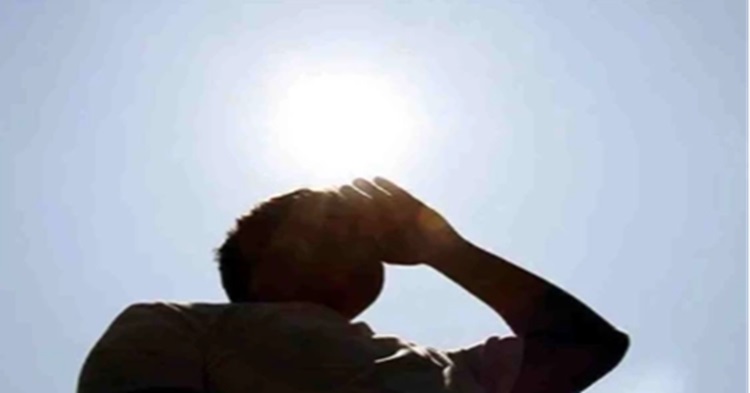Dhaka in heat trap; shining skyline overlooks sustainable designs


As the gleaming glass towers reshaping Dhaka’s skyline, experts warn that the rapid proliferation of high-rise buildings with extensive glass facades is intensifying urban heat, with little attention given to mitigating strategies suitable for tropical climates.
They said sustainable design considerations appear largely overlooked, as the publicly available versions of the Bangladesh National Building Code (BNBC) 2015 and 2020 lack detailed mandatory requirements for glazing performance, such as U-value and solar heat gain coefficient.
According to multiple new studies and environmental experts, the city has witnessed a boom in glass-clad high-rises particularly in Gulshan, Banani, Uttara, Motijheel and Dhanmondi mirroring architectural trends from tropical metropolises like Singapore and Dubai over the past decade.
Asked about the growing number of glass towers and city heat, Chairman of the Centre for Atmospheric Pollution Studies (CAPS) Prof Dr Ahmad Kamruzzaman Majumder said, “Dhaka’s growing number of glass-covered buildings may look modern, but they are silently worsening the condition of city’s heatwave. The urban heat island effect and the city's need for air conditioning are exacerbated by these glass buildings' absorption and emission of solar radiation.”
“In reality, the apparent improvement in design is contributing to an unsustainable rise in temperature. To address this, we need to focus on climate-responsive design features like shaded exteriors, green roofs and enhanced natural ventilation,” he said.
Kamruzzaman Majumder said if nothing is done quickly, Dhaka's modern buildings could become a heat trap, which would be harmful to both the environment and people's health.
A recent study by the Centre for Atmospheric Studies found that surface temperatures in glass-dominated areas such as Gulshan, Banani and parts of Uttara are 3–5°C higher than in greener, low-rise neighbourhoods.
Chair of the Department of Environmental Science at Stamford University show that 70–80 percent of new buildings in Dhaka’s upscale areas now feature glass facades covering at least 60 percent of their exterior.
A 2019 survey found over 100,000 air conditioners running across just 1,068 apartments in Dhanmondi, underscoring the city’s mounting energy burden, he added.
The broader urban trend is equally concerning.
According to a 2024 study published in the Asia-Pacific Journal of Atmospheric Sciences, Dhaka’s average UHI intensity — the temperature difference between urban and nearby rural areas — now stands at 0.48°C, with a maximum daily difference of 2.15°C.
The research found that UHI intensity in Dhaka has been rising by 0.21°C per decade since 1995.
The study also revealed that heat waves and UHI effects reinforce each other, particularly during the pre-monsoon and monsoon seasons, making Dhaka’s hot months even more oppressive.
Another modelling study by Seoul National University found that converting conventional low-albedo roofs into “cool roofs” could reduce Dhaka’s afternoon air temperature by 0.57°C during heatwave conditions, while green roofing and vertical greenery could provide additional cooling effects.
Dhaka South City Corporation officials told UNB that they are reviewing urban design codes to promote heat-resilient materials, reflective coatings, and increased tree coverage as part of upcoming building regulation reforms.
For many residents, the problem is already tangible. “By noon, our glass office turns into a furnace,” said Shakil Ahmed, who works in a corporate tower in Gulshan. “Even powerful air-conditioners can’t keep up.”
The BNBC 2020 (published by the Ministry of Housing and Public Works) provides the overarching regulatory framework for design, materials, construction, occupancy and building services.
Under the earlier draft of BNBC 2015: Materials used for insulation (floor/roof/wall) must have a “flame spread rating not more than 25” and “smoke density not more than 450” while Part 5 (Building Materials) lists “Thermal Insulating Materials” and “Glass and Glazing” among categories.
The code is explicit about fire-resistance, non-combustible construction types, and materials standards.
While insulation and thermal materials are mentioned, there is no detailed mandatory requirement in the publicly-available version of the BNBC (2015 or 2020) for glazing performance (for example U-value, solar heat gain coefficient), or for façade design in tropical climates (shading, reflectivity, vertical greenery).
The code treats “thermal insulating materials” mainly from fire-safety / building materials specification perspective, not explicitly from urban heat island mitigation or solar-heat gain minimisation. There is little to public evidence that the code mandates limiting large glass-façade ratios in tropical, dense urban areas, or offers prescriptive performance criteria for glass towers (reflectivity, external heat reflection, thermal load, etc.).
For materials and construction methods aimed at reducing ambient urban heat (e.g., cool-roofs, high-albedo surfaces, shading devices), the code mentions basics but does not appear to give strong enforceable clauses specifically for façade design or urban-microclimate control.
President of Bangladesh Institute of Planners (BIP) Professor Adil Mohammed Khan said the use of large glass panels in building designs across Dhaka city has increased significantly in recent years.
From high-rise commercial buildings to residential projects, most of the walls are now being covered with glass panels—often perceived as a “modern” or “smart” look. However, in reality, this trend has become one of the major contributors to rising urban temperatures.
“Glass facades allow sunlight and heat radiation to enter buildings and also reflect it outward. This causes the surrounding air to heat up, intensifying the urban heat island effect. In a densely populated city like Dhaka—where green spaces and open areas are already scarce—these glass buildings are effectively turning into heat traps,” he said.
At the same time, such buildings require continuous air-conditioning, which increases electricity demand and generates more heat—creating a cycle that continuously raises the city’s overall temperature , he added.
Professor Adil said it is essential to include clear policies in our building code regarding the use of glass.
Specific guidelines should determine which sides of a building and what percentage of the facade can be made of glass. Climate-responsive architecture must be encouraged.
Given Bangladesh’s hot and humid climate, features such as shaded balconies, cross ventilation, and the use of local materials are far more suitable than extensive glass facades.Implementing a Green Building Code is now a necessity.
